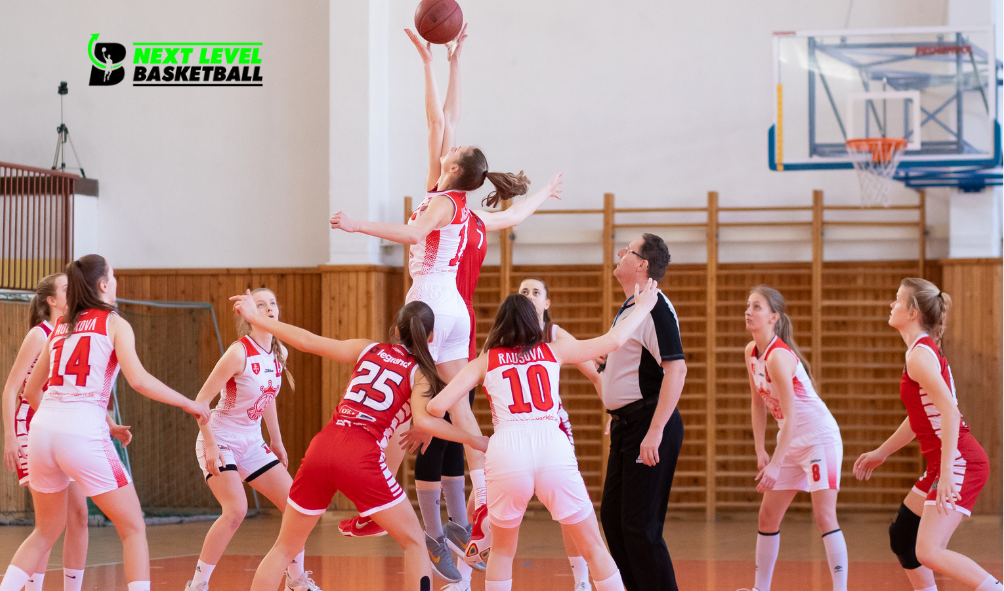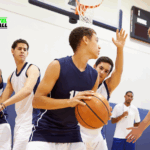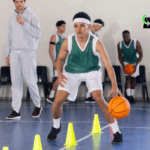Understanding The Fundamentals Of Defensive Approach
To master the defensive approach in playing basketball, understanding the fundamentals of a proper defensive stance is crucial. A strong defensive stance serves as the foundation for effective defense, enabling players to react quickly, maintain balance, and exert constant pressure on their opponents. The stance begins with a wide base, with feet positioned slightly wider than shoulder-width apart and knees bent.
This positioning lowers the center of gravity, enhancing stability and allowing for rapid lateral movements.
Foot placement and weight distribution are critical. Players should keep their weight on the balls of their feet, which facilitates agile movements and quick changes in direction. The back should remain straight, and the player should avoid leaning too far forward, as this can disrupt balance and make it easier for opponents to blow past. Engaging the core muscles aids in maintaining a coherent body stance that can effectively counter offensive maneuvers.
Proper hand positioning is equally important. Hands should be active and ready—one hand low to disrupt dribbles and one high to challenge shots and passes, creating a more comprehensive defensive barrier. Eye focus is essential, maintaining awareness of both the ball handler’s torso and the broader court to anticipate their movements and possible plays. Mastering these basic elements of the defensive stance allows players to develop into formidable defenders, capable of exerting pressure and dictating the flow of the game.
Anticipating Offensive Plays And Players’ Movements
Anticipating offensive plays and players’ movements is a crucial aspect of mastering the defensive approach in basketball. This skill, often honed through a combination of experience, observation, and instinct, can significantly disrupt the flow of the opposing team and create turnovers. Effective anticipation begins with studying the tendencies and patterns of the opposing team. By analyzing game footage, defenders can identify key plays and individual moves that the offense relies on.
This preparation allows defenders to position themselves strategically, ready to intercept passes or force opponents into unfavorable situations.
On the court, anticipation involves keen awareness and focus on the offensive players’ body language and positioning. Subtle cues, such as the shifting of a player’s eyes or the setup of screens, can provide defenders with insight into the intended direction of a play. Skilled defenders excel at reading these cues and making split-second decisions that place them one step ahead of the offense.
Communication among defenders is also essential to effective anticipation. By vocally sharing observations and signals, defenders can work in unison to adapt to developing plays, close potential gaps, and apply pressure where it’s most needed. This coordinated effort disrupts the offensive rhythm and forces players to hastily adjust, increasing the likelihood of mistakes and missed opportunities.
Effective Communication And Team Coordination In Defense
Effective communication and team coordination in defense are crucial components in mastering a defensive approach in basketball. Communication on the court allows players to synchronize their actions, ensuring that everyone is on the same page and working collectively toward a common goal. Defensive communication involves constantly talking to teammates about screens, switches, and potential threats, allowing the defense to adapt quickly to the opposition’s movements.
- Verbal cues, such as shouting “screen left” or “switch,” are essential in alerting teammates to make necessary adjustments and avoid being caught off guard.
- Non-verbal communication, such as eye contact and hand signals, plays a vital role in maintaining fluidity and understanding among players. Good defenders are constantly aware of their surroundings, using glances and gestures to inform their teammates of player positions and potential rotations.
Effective communication minimizes the likelihood of defensive breakdowns and prevents easy scoring opportunities for the opponent.
Team coordination, on the other hand, relies on understanding and executing a shared defensive strategy. This involves knowing each player’s strengths and weaknesses, anticipating their next move, and positioning accordingly. A well-coordinated team will seamlessly switch assignments, rotate to provide help defense, and cover open spaces, making it difficult for the opposition to find gaps. By mastering these aspects, teams can forge a resilient and united defensive front, thus making a significant impact on the overall game outcome.
Techniques For Successful On-Ball Defense
Mastering on-ball defense is crucial for any basketball player seeking to become a defensive stalwart.
- The foundation of successful on-ball defense begins with the perfect stance. Players need to maintain a low, balanced posture, keeping their knees bent and back straight, which allows for quick lateral movements. The agility to shuffle side-to-side without crossing feet is paramount, as this enables the defender to stay ahead of the offensive player and impede their path.
- Hand positioning is another critical element; defenders should keep one hand low to disrupt dribble moves and the other high to contest potential passes or shots.
- Anticipation plays a vital role in on-ball defense. By studying opponents’ tendencies, players can predict movements and react promptly. Quick reflexes and the ability to recover rapidly from missteps are key to maintaining pressure. The mental aspect of defense cannot be understated; confidence and focus enhance a defender’s ability to disrupt offensive plays.
- Communication with teammates also strengthens on-ball defense. Effective communication ensures proper help defense is available if the offensive player manages to breach the initial line of defense. Finally, endurance and fitness are essential; the ability to maintain high-intensity defense without fatigue ensures consistent performance throughout the game, making it difficult for opponents to find scoring opportunities.
Strategies For Off-Ball Defense And Help Defense
In basketball, mastering off-ball defense and help defense is crucial for creating a robust defensive strategy.
Off-ball defense – focuses on guarding opponents who do not currently have possession but pose a potential threat. The key is maintaining a balance between staying close enough to your assigned player to contest any surprise movements and remaining alert to the broader court dynamics. An effective off-ball defender must be agile, capable of reading plays, and aware of both the ball’s position and their own opponent’s tendencies.
Help defense – requires players to assist teammates who are defending a ball-handler, stepping in to block driving lanes or double-team when necessary. It involves leaving your own assigned player to address a more immediate threat, which demands excellent communication and trust among teammates. Successful help defense relies on the ability to anticipate the opponent’s next move, quick decision-making, and understanding the team’s defensive rotations.
This means knowing when and how to switch defensive assignments smoothly during play without leaving other attackers unchecked.
Both off-ball and help defense require a heightened sense of spatial awareness and a disciplined approach. Players must remain vigilant, attentive to cues such as ball movement, player positioning, and screen actions, adjusting their stance and positioning accordingly to resist offensive advances and protect the basket effectively.
Drills And Practices To Improve Defensive Skills
Improving defensive skills in basketball requires a combination of focused drills and consistent practice designed to enhance agility, awareness, and strategic thinking. Below are the effective approaches to improve your defensive skills:
- Do lateral movement drills, which are crucial for staying in front of opponents. These exercises involve shuffling side to side in a low stance, helping players build the muscle memory and strength necessary to mirror offensive players’ movements effectively.
- Closeout exercise, where players practice sprinting toward an opponent, stopping abruptly in a defensive stance to challenge shots without fouling or being easily bypassed. This drill enhances a player’s ability to apply quick, controlled pressure without compromising balance.
- Situational defensive training, such as 2-on-2 and 3-on-3 scrimmages, allows players to simulate game scenarios. These scrimmages encourage communication and teamwork while fostering an understanding of when to switch assignments or provide help in defense effectively. Incorporating shell drills can further solidify team defensive concepts, as players rotate through different defensive responsibilities, reinforcing positioning and awareness. Regularly integrating these targeted drills into practice enhances individual capabilities and contributes significantly to a team’s overall defensive prowess.
By consistently challenging defensive footwork, decision-making, and teamwork, players can develop the instincts and skills needed to excel defensively on the court.
Gear up, hit the court, and let your performance do the talking. Master the defensive approach in playing basketball with Next Level Basketball. Call 954-621-8470 to book your first session.





